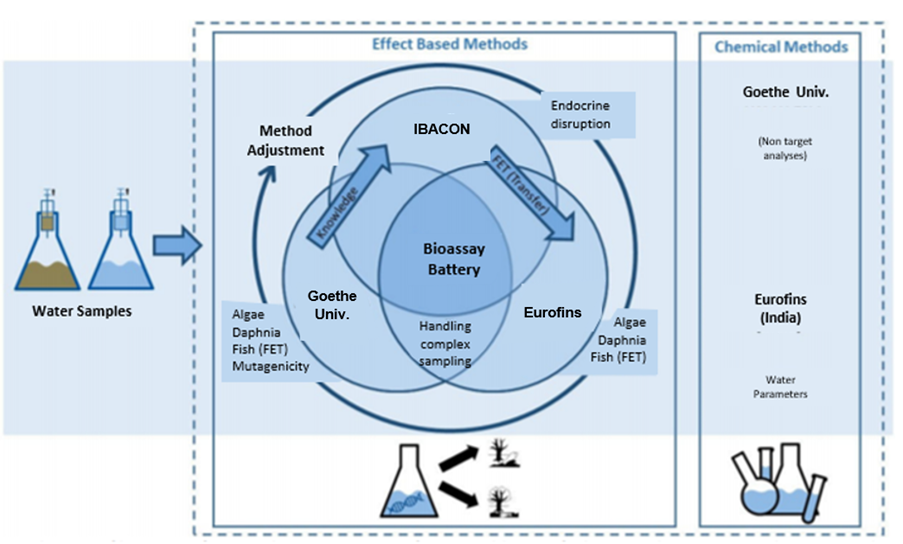Effect-based and target monitoring methods (Lead: Goethe University)
Involved Partners: Goethe University, Ibacon/Eurofins, Eurofins Advinus
Detailed task distribution in Workpackage 2:
Goethe University and Ibacon/Eurofins will select bioassays and optimize the methods for ecotoxicological evaluation of the given treatment environment using synthetic mixtures of pollutants (input from WP1, Figure 4). Subsequent transfer of techniques to India will enable water quality monitoring of the pilot plant in WP3. If compound groups that elicit biological effects can be identified by chemical analysis of treated water, they will undergo predictions of toxicity. The results from WP2 will feedback to WP1 and WP3.
- Selection and establishment of bioassay battery (Ibacon/Eurofins, Goethe Univ.)
- Test of synthetic mixtures (EMB) for validation of the bioassay battery and optimization of the treatment technology
- Optimization of EBM for given environment (high salinity)
- Transfer EBM from Germany to India
- Identify drivers of toxicity investigating raw process and treated wastewater
- Apply QSAR models for prediction of toxicity of identified key pollutants
- Provide monitoring activity in WP3 for both EBM and target analyses
